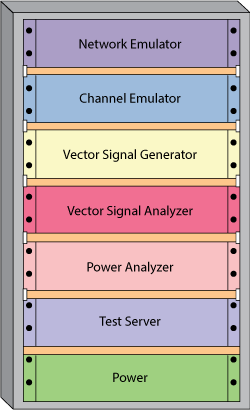
Figure 5 Integrated system for 5G terminal testing.
The integrated UE tester is used to emulate partial functioning of the network, then test the RF performance of the UE under network conditions or, with the signal generators, signal analyzers (including spectrum analyzer) and other conventional test instruments, perform conformance testing such as RF, protocol and radio resource management. How to emulate massive UEs is likely to be a huge challenge for UE emulator design. 5G UE diversity means that existing test instruments must have superior scalability and compatibility. Additionally, typical application scenarios of the IoT, such as intelligent water meters and smart parking call for low power consumption testing to assess battery self-discharge and sleep mechanisms. The industry is presently lacking a mature test methodology to quantify UE power consumption characteristics. Other test systems, such as the NV-IoT test system, 5G terminal card interface test system and signaling monitors, are all indispensable components of 5G UE test. Note that 5G UE test tends to be integrated; it will be a comprehensive test system to replace multiple sets of discrete systems, as shown in Figure 5.
Similar to UE test, the IC manufacturers’ desire for 5G test instruments is strong throughout all phases, from chip development to product certification and mass production. Specifically, test instruments are required to simulate network functions, verify and evaluate RF solutions, complete chip function/performance authentication and perform final production test. To facilitate the operation, further needs include installing software with a project configuration and results display, integrating other instruments to build test systems and supporting remote control. Also, driven by continuous module redesign, configuration changes and reduced IC R&D cycle times and costs, the traditional IC test system is faced with the need to be flexible, to reduce test costs and improve production efficiency.
Network equipment testing is used to verify compliance with a communications system’s quality specifications, interface requirements with other devices and electromagnetic compatibility, both intra-system and inter-system. A 5G network equipment test requires general instruments, such as a VSG, spectrum analyzer, power meter, UE emulator and channel emulator to build a massively connected test system with broad coverage. The aim is to test the load capacity limit and overload coordination capabilities of specific uplink and downlink service models and to evaluate system performance under different channel conditions. In the future, these test instruments must follow corresponding 5G test specifications with continuous optimization and upgrade capability, satisfying the performance needs of 5G and supporting a wider range of application scenarios.
CONCLUSION
Driven by considerable market demand, 5G test has made rapid progress. Top instrument suppliers around the world are working closely with universities and other research institutions. The entire industry is inspired by recent research achievements and products. Still, there are some fundamental problems to be solved, including the establishment of new test specifications, the exploration of 5G measurement principles and the development of new measurement platforms.
ACKNOWLEDGMENT
This work was supported by the National Natural Science Foundation of China (61627801) and China National S&T Major Project (2015ZX03001011).
References
- S. Talwar, D. Choudhury, K. Dimou, E. Aryafar, B. Bangerter and K. Stewart, “Enabling Technologies and Architectures for 5G Wireless,” IEEE MTT-S International Microwave Symposium Proceedings, June 2014.
- A. Gupta and R. K. Jha, “A Survey of 5G Network: Architecture and Emerging Technologies,” IEEE Access, Vol. 3, July 2015, pp. 1206-1232.
- “IMT 2020 5G Vision and Requirements,” IMT-2020 (5G) Promotion Group, May 2014, wenku.baidu.com/view/02540487360cba1aa811da7d.html.
- “IMT-2020 5G Concept,” IMT-2020 (5G) Promotion Group, February 2015, wenku.baidu.com/view/2a32635a0066f5335b81215a.html.
- “IMT-2020 5G Wireless Technology Architecture,” IMT-2020 (5G) Promotion Group, May 2015, www.scribd.com/doc/294556768/WHITE-PAPER-ON-5G-WIRELESS-TECHNOLOGY-ARCHITECTURE-pdf.
- J. Gozalves, “Fifth-Generation Technologies Trials [Mobile Radio],” IEEE Vehicular Technology Magazine, Vol. 11, No. 2, June 2016, pp. 5-13.
- “IMT-2020 5G Network Technology Architecture,” IMT-2020 (5G) Promotion Group, May 2015, wenku.baidu.com/view/4edcdeca767f5acfa0c7cd4a.html?re=view.
- J. Gozalvez, “5G Tests and Demonstrations [Mobile Radio],” IEEE Vehicular Technology Magazine, Vol. 10, No. 2, June 2015, pp. 16-25.
- “5G Channel Sounding Reference Solution,” Keysight Technologies, www.keysight.com/main/facet.jspx?&cc=CN&lc=chi&k=5G+channel+sounding&pSearch=tnmSearch&hasLuckySearch=true.
- “5G Channel Sounding,” Rohde and Schwarz, www.rohde-schwarz.com/solutions/wireless-communications/5g/5g-channel-sounding/5g-channel-sounding_230238.html.
- T. S. Rappaport, S. Sun, R. Mayzus, H. Zhao, Y. Azar, K. Wang, G. N. Wong, J. K. Schulz, M. Samimi and F. Gutierrez, “Millimeter Wave Mobile Communications for 5G Cellular: It Will Work,” IEEE Access, Vol. 1, May 2013, pp. 335-349.
- J. Medbo, K. Börner, K. Haneda, V. Hovinen, T. Imai, J. Järvelainen, T. Jämsä, A. Karttunen, K. Kusume, J. Kyröläinen, P. Kyösti, J. Meinilä, V. Nurmela, L. Raschkowski, A. Roivainen and J. Ylitalo, “Channel Modeling for the Fifth Generation Mobile Communications,” 8th European Conference on Antennas and Propagation, April 2014, pp. 219-223.
- Aalto University, AT&T, BUPT, CMCC, Ericsson, Huawei, Intel, KT Corporation, Nokia, NTT DOCOMO, New York University, Qualcomm, Samsung, University of Bristol, University of Southern California, “5G Channel Model for Bands Up to 100 GHz,” www.5gworkshops.com/5GCM.html.
- “MIMO Channel Modeling and Emulation Test Challenges,” Application Note, Keysight, rfmw.em.keysight.com/wireless/helpfiles/n5106a/5989-8973en.pdf.
- T. L. Marzetta, “Non-Cooperative Cellular Wireless with Unlimited Numbers of Base Station Antennas,” IEEE Transactions on Wireless Communications, Vol. 9, No. 11, November 2010, pp. 3590-3600.
- X. H. You, Z. W. Pan, X. Q. Gao, S. M. Cao and H. Q. Wu, “The 5G Mobile Communication: the Development Trends and its Emerging Key Techniques,” SCIENTIA SINICA Informationis, Vol. 44, No. 5, January 2014, pp. 551-563.
- P. Zhang, Y. Z. Tao and Z. Zhang, “Survey of Several Key Technologies for 5G,” Journal on Communications, Vol. 37, No. 7, July 2016, pp. 15-29.
- N. Liu and H. W. Yuan, “Research Status and Development Trends of Large Scale Antenna Systems in 5G Wireless Communications,” Electronic Science and Technology, Vol. 28, No. 4, April 2015, pp. 182-185.
- F. Y. Yang, T. Yang and W. L. Xie, “Study and Application on Test Methodology of Active Antenna System,” Telecommunication Science, Vol. 30, No. 2, February 2014, pp. 105-111.
- E. Hossain and M. Hasan, “5G Cellular: Key Enabling Technologies and Research Challenges,” IEEE Instrumentation & Measurement Magazine, Vol. 18, No. 3, June 2015, pp. 11-21.
